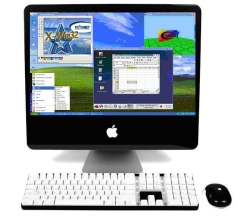Burn the DMG image file located in the “Resources” folder which is inside the Boot Camp Package. The Boot Camp package is in the utilities folder and is what you click on to run Boot Camp Assistant.
- Right-click over the Boot Camp Assistant app in the Utilities folder.
- Select “Show Package Contents”
- Open the Contents folder and then the Resources folder
- Burn the DMG image file in that folder. The DMG image file will probably be named DiskImage.dmg
NOTE: These procedures are for Boot Camp beta running in Mac OS X Tiger 10.4. In Mac OS X 10.5 Leopard you can just use the Leopard install CD/DVD as the Windows driver CD.
